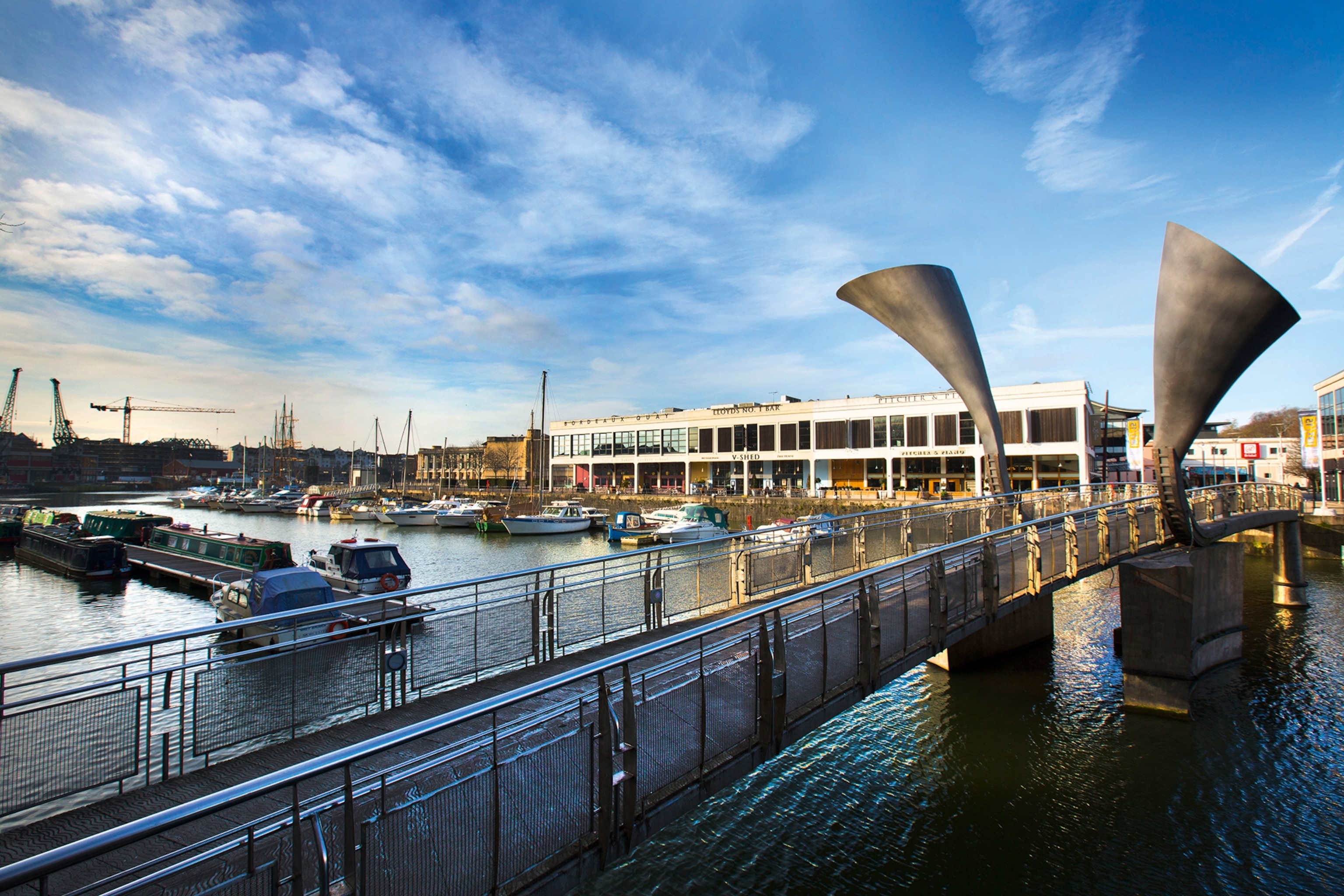
How Bristol is breathing new life into its maritime quarter
Dockland regeneration, repurposed boats and museums shed a light on this south-west city’s historic connections to the sea.
It’s 11pm in Bristol Harbour and the boat is rocking. Hometown shanty band The Longest Johns are on stage, belting out renditions of old maritime tunes while a sold-out, ale-fuelled crowd are singing along with gusto. The night might be a cold one, but inside is a world of festival lighting and fogged-up specs. The harbour waters lap against the hull as songs of distant seas and drunken sailors are roared out in unison.
Few UK music settings are as unique as Thekla, a 1950s German cargo ship reinvented as a floating events venue. It’s now moored permanently near the Grade II-listed Prince Street Bridge, its masts bare but its lower decks regularly crammed with gig-goers. This blurring of the lines between past and present is hard to escape in Bristol. Just a few feet away from the ship’s gangway is Mud Dock, a bike-shop-cum-brunch-spot in a brick warehouse. On arrival, you’re greeted by a large stencil of Isambard Kingdom Brunel — the 19th-century engineer who designed Bristol’s iconic Clifton Suspension Bridge — on a fold-up bike.
For the casual visitor, the harbourside is one of the best places to start making sense of Bristol’s complex character. It’s here, for starters, that you’ll find M Shed, a former transit building turned into a museum. It tells the city’s story frankly, with no punches pulled when it comes to its links with the slave trade. Almost directly opposite the museum is the spot where, in 2020, the 125-year-old statue of English merchant Edward Colston was unceremoniously dumped into the dock by locals.

There’s a lot of harbour to explore here. The waterside pubs are full of history. The Ostrich has a still-visible cave where seafaring smugglers hid contraband; The Hole in The Wall takes its name from a spyhole where ne’er-do-wells could watch for customs officers; and The Orchard Inn, which sits around the corner from a large Banksy artwork, has been serving up West Country tipples for 180 years. When I step inside, there are more than 20 ciders on offer. How to choose? “You can’t go wrong with the farmhouse makers,” the server tells me quietly, as if imparting an age-old truth.
On a crisp morning, I walk west along the docks, overlooked by gaily painted houses high on the opposite bank. Over the centuries, everything from wool, wheat and rum to salt, fish and sherry have passed through this wharf in industrial quantities. Today, the ships along its length tell their own stories. There are houseboats complete with pot plants and washing lines; close by is Miss Conduct, a yacht that had a former life as a New York dinner cruiser; further along is The Matthew, an inch-perfect replica of the wooden caravel that famously sailed from Bristol on a transatlantic voyage to Newfoundland in 1497.
Then, the SS Great Britain appears in the distance, replete with bunting. The ship was one of Brunel’s masterpieces, described as ‘the greatest experiment since creation’ when it was launched in 1843. It was the first ocean liner of its kind with an iron hull, and was faster than its forebears, though it still took two months to make the sailing to Melbourne, Australia. This was a voyage it completed more than 30 times, carrying 700 emigrants at a time; it’s estimated that some half a million present-day Australians are descended from the ship’s passengers.
To step aboard today is to get a sense of what life must have been like at sea. The first-class dining saloon is spacious and extravagant, while the dark steerage berths are full of cramped bunks and dirty linen. As a visitor attraction, it’s fascinating, with copious diaries and letters on show. ‘It is not the ship I mind,’ wrote one well-to-do passenger, midway through her long trip Down Under in 1875, ‘it is the sea.’

In later years, the SS Great Britain became a transatlantic liner, then a cargo carrier, before being abandoned and spending several decades rusting in the Falkland Islands. The ship now sits in the same dry dock it was built in, its return and restoration a testament to the old Bristolian trades that have been kept alive to this day.
At the far end of the harbour, I find Underfall Yard, an early 19th-century boatyard where traditional riggers, blacksmiths and boatbuilders still have workshops. “This used to be the hub of the harbour,” says the yard’s community manager Flex Toomey. “When you hear the expression ‘shipshape and Bristol fashion’, it has its origins right here.” She takes me on a tour of the site, pointing out pumping engines, a slipway and Victorian sluices.
We finish at the yard’s visitor centre, where interactive displays are housed in an old powerhouse. Part of the building is now a waterfront cafe selling eggs and artisan coffee, with views back down the length of the harbour. Bristol has become an easy place to enjoy, even while the city is still deciphering its past.
To subscribe to National Geographic Traveller (UK) magazine click here. (Available in select countries only).





